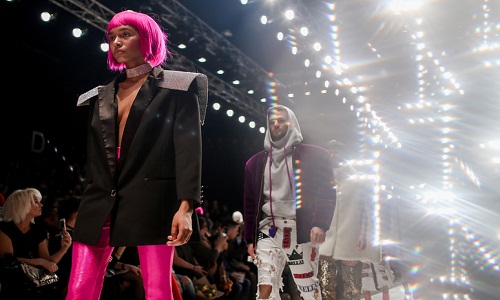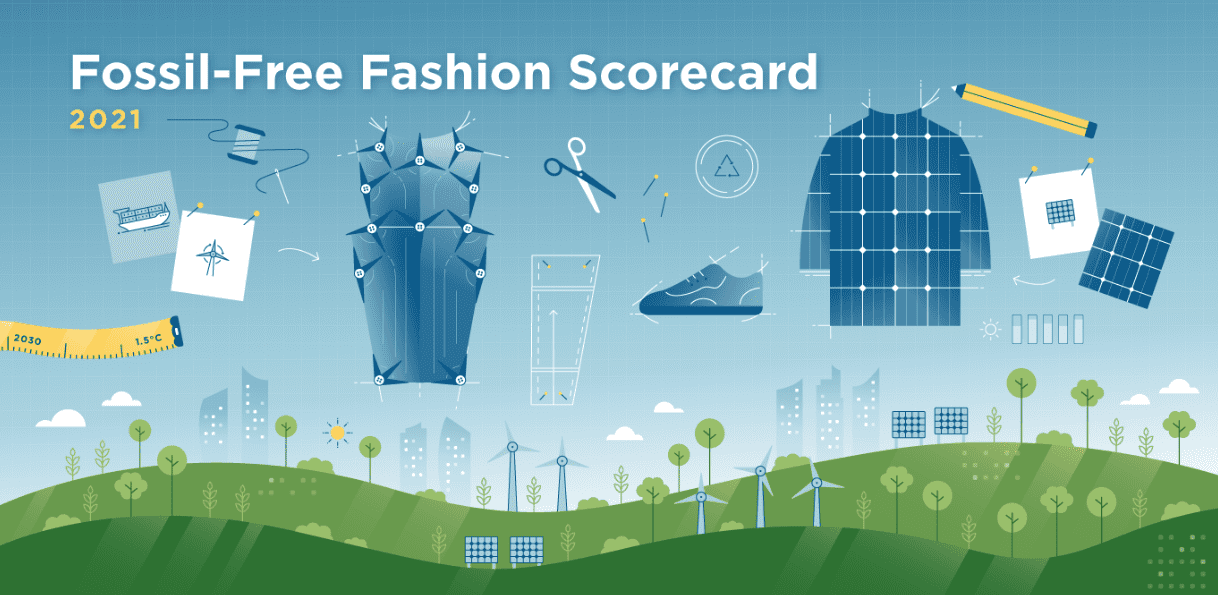FW
Synthetic fibers have a 62 per cent share of the world fiber market. Synthetic fibers are used in sectors like fashion and apparel, healthcare, aerospace, packaging, electronics and automotives. Rapid industrialization, low production cost, changing consumer preferences for textiles, and increasing disposable income are projected to drive the global synthetic fiber market over the next few years.
Weak supply of natural fibers such as cotton and wool is another factor driving the global synthetic fiber market. Synthetic fibers refer to textile fabrics that are manmade, such as nylon, acrylic, polyester and carbon fiber. Apart from their superior characteristics of adaptability, durability, elasticity, and strength, synthetic fibers are cost effective to make and easier to maintain as compared to other natural fibers such as cotton and wool.
China is the biggest manufacturer of synthetic fibers in the world. India is the second largest. India surpassed Taiwan and the United States as a fiber powerhouse in the mid-2000s, thanks to its huge polyester fiber capacity increase. The demand for synthetic fibers is still high in North America, especially in the US, making it the leading market for synthetic textile fibers produced in Latin America and Europe.
Functional changes are being incorporated in synthetic fibers with little or no hazardous impact on the environment.
The next edition of ITMA, the world’s largest textile and garment technology exhibition, will be held in Spain from June 20 to 26, 2019. It is expected to feature over 1,500 exhibitors from 45 countries. ITMA. It is a unique showcase of live machinery demonstrations and innovative solutions that boost productivity and profitability.
The 2019 edition will focus on innovation, which creates a competitive advantage for manufacturers. Sustainable innovation that drives growth for the textile and garment industry will be emphasised at the exhibition. A host of exciting highlights and knowledge-sharing activities have been planned which give added value to exhibitors and visitors alike.
When ITMA was last held in Spain in 2011, there were more than a lakh of visitors from 138 countries. A huge majority of visitors came from outside Spain.
ITMA has a 64-year history of displaying the latest in machinery and software for every single work process of textile making. It is held every four years in Europe. It is a showcase of the latest technological innovations and a place where suppliers and customers from the whole world can meet.
ITMA is owned by CEMATEX (European Committee of Textile Machinery Manufacturers), which comprises the national associations of the following nine countries: Belgium, France, Germany, Great Britain, Italy, Netherlands, Spain, Sweden and Switzerland.
In 2016, Rieter’s net profit fell 14 per cent as sales decreased nine per cent. EBIT margin was six per cent. Rieter supplies systems for short-staple fiber spinning. In the full year, order intake rose 13 per cent year-on-year. In the first half of 2016, orders were at a good level, mainly driven by solid demand from Turkey. In the second half of the year, the dynamism in Turkey and India slowed significantly due to increasing political uncertainties, with the result that orders declined.
Sales in China increased 33 per cent and in India it rose 28 per cent. In other Asian countries, sales declined 12 per cent but remained at a good level. In North and South America, following the completion of deliveries of large orders in the previous year, sales declined. In Turkey, a large portion of good order intake from the first half year was delivered on schedule by the end of the year. Despite this, sales in Turkey fell by 17 per cent compared to the previous year.
Despite low visibility in the sales markets, Rieter expects sales and profitability for 2017 to be at the level of the previous year (before restructuring costs).
Patagonia has won the Accenture Strategy Award for Circular Economy Multinational during the World Economic Forum’s Community of Young Global Leaders in Davos.
Patagonia has made notable contributions to the circular economy, driving innovation and growth, while reducing dependence on scarce natural resources. In summer 2017, Patagonia will launch an e-commerce platform where the company will sell used Patagonia clothing and gear online, sourced directly from its customers. Customers will be invited to bring used items to their local Patagonia store in exchange for Patagonia merchandise credits. This platform’s aim is to extend the life of garments by encouraging people to sell unused clothing, reach new customers and promote the durability and quality of Patagonia products.
The growing trend toward fast fashion has created a very linear economic model that produces enormous waste. In contrast, Patagonia is working to counter this approach with a circular business model that focuses on making the highest quality products and helping its customers keep the products in use as long as possible.
Patagonia encourages people to take good care of their gear, washing and repairing as needed, and eventually recycling once the garment can no longer be used. Its facility in the US repairs over 45,000 items a year, and the company operates retail repair stations around the world, in addition to providing customers with free tools for repairing their own clothing. With every repair, the company provides feedback to its designers to improve future products.
Jakob Müller will exhibit its latest technological solutions at Techtextil, Germany, May 9 to 12, 2017. Comez Acotronic 8B/600 is a high-efficiency, electronic crochet knitting machine that employs compound needles for the production of a wide range of ribbons, technical and medical textiles, both elastic and non-elastic. The machine comes in several gauges, from E10 to E20, has a 600 mm working width and is fitted with eight weft bars with electronic control.
A new feature of this machine is a special embroidery device which allows to sew weft yarns into a ground fabric. This device requires the use of piercing-compound needles and the yarns that can be processed are numerous: synthetic and natural yarns, as well as high-performance fibers.
The electronically controlled NH2 53 2/130 narrow fabric loom, which offers virtually unlimited repeat lengths, produces a bag tape with woven-in drawstring. As a result of the electronic shed formation possessing patterning possibilities employing up to sixteen electronically controlled shafts, a variety of bags in differing sizes can be produced on every machine space.
Jakob Müller is a specialist in the technology for manufacturing woven and knitted tapes and webbings as well as technical textiles, printed narrow fabrics and winding machinery.
Between April 2016 and January 2017, India’s exports of wool and wool blends fell 18 per cent in dollar terms and 15 per cent in rupee terms. One reason is the US, the European Union and the UAE are witnessing a slowdown. About 70 per cent of the exports go to the US and European countries, so any fall in demand impacts exports to a substantial level.
The slowdown in global demand has affected medium-sized manufacturers in Ludhiana and Amritsar. Punjab accounts for 35 per cent of the total exports of wool and wool-blended products followed by Maharashtra and Rajasthan. Now, woolen manufacturers are exploring options like Kazakhstan, Australia, Germany and China. They are participating in trade fairs and buyer-seller meets.
In addition the industry has asked for exempting raw wool from import duty, abolishing import duty on woolen textile machinery and increasing duty drawback rates. India’s wool and woolen textile industry is the seventh largest in the world. India’s wool and woolen industry can broadly be divided into worsted yarn, woolen yarn, wool tops, fabric, shoddy yarn, shoddy fabrics, blankets, knitwear, handmade carpets and machine made carpets.
Woolen handmade carpets contribute 72.7 per cent to total woolen exports.
Textile production has a major environmental impact. Conventional cotton growing, where large quantities of insecticides are spread directly on land, stands out as a particularly heavy burden on the environment.
Choosing eco-labeled clothes makes a difference. There are several cotton labels. However, eco-cotton labels only indicate that the cotton was organically grown – they say nothing about the rest of the production process (dyeing and treatment). The major environmental impact is found in post-fiber processing stages: spinning, weaving, knitting and, above all, in the dyeing – the wet processing.
In industrialized countries, only a tiny percentage of garments are worn 100 to 200 times, which is usually the potential lifetime. In Sweden, for example, consumers buy an average of 50 new garments per person and year. Similar figures apply to the rest of Europe and the United States.
Textiles that are made of cellulose from trees and plants are an important track in research and development to close the loop so that the textile industry becomes sustainable. Viscose, modal and Lyocell/Tencel are examples of such textiles that are already available and whose environmental performance is often good. When consumers buy used clothing instead of new, the environmental benefit is substantial.
Online shopping is generally a very good alternative from the environmental perspective.
The spandex market in China has been climbing for the last five months. As polyester and nylon prices have slipped, spandex prices have surged. Spandex demand from downstream markets has varied. Large weaving plants have built up sufficient raw material stocks. Small and medium plants are mainly purchasing raw materials on a need-to basis. In Xiaoshan and Shaoxing, some circular knitting plants have reduced operating rates after completing previous orders. In Guangdong, warp knitting plant operating rate stands around 70 per cent while in Fujian, lace knitting plant operating rate remains below 50 per cent.
Xinxiang Chemical Fiber has already started trial production of its second phase of the super-soft spandex project. Hyosung is expected to commence a 20,000 tons per annum project in March 2017.
As spandex capacity expansion continues in 2017, some players remain hesitant about market outlook. However, in the short term, spandex prices remain buoyant on the back of strong raw materials and low inventory. Currently, downstream plants are mainly running on previous stocks and fresh deals are rare. Besides, as polyester and nylon prices have been falling lately, downstream plants are hesitant about buying raw materials. Thus while spandex prices continue to rise trading volumes are gradually decreasing.
China may become Vietnam’s largest export destination by 2030. Right now, the US is Vietnam’s largest export market. The US and Vietnam enjoy historically strong commercial linkages and by 2030 the US will still account for 15 per cent of Vietnam’s exports.
Clothing and apparel are expected to top Vietnam’s exports, contributing almost 20 per cent to total merchandise exports. Vietnam’s infrastructure has improved over the last decade, supported by higher FDI inflows and reflecting strong growth. Substantial infrastructure development means industrial machinery will continue to be Vietnam’s largest import sector through 2030, contributing around a quarter of import growth over the forecast period.
Vietnam’s biggest imports will be from China and South Korea through 2030. As well as having strong footholds in the global market for industrial machinery, the two countries also present relatively easy transport logistics, with China sharing a border with Vietnam and South Korea just a short journey by sea.
Imports from India will also grow strongly, contributing 14 per cent of total import growth by 2030, propelling India past Singapore to become Vietnam’s third largest import partner. Mobile phones and associated items accounted for 16 per cent of Vietnam’s exports in 2014, while electronics, computers and components accounted for another eight per cent, leaving the electronics sector accounting for a quarter of Vietnam’s total exports.
"The third day of Mercedes-Benz Fashion Week Russia started with the show by DARIA DASHINA. This unique Russian brand uses fine handcrafts and state-of-the-art technologies. Fall-Winter 2017/2018 collection offered trendy integrally knitted garments for both women and men. Specially for the latter DASHINA started a line of sweaters with large surface patterns and turtlenecks. Jersey elements of the ensemble and accessories are supplemented with suits made of natural fabrics and glossy sparkling dresses and skirts."

The third day of Mercedes-Benz Fashion Week Russia started with the show by DARIA DASHINA. This unique Russian brand uses fine handcrafts and state-of-the-art technologies. Fall-Winter 2017/2018 collection offered trendy integrally knitted garments for both women and men. Specially for the latter DASHINA started a line of sweaters with large surface patterns and turtlenecks. Jersey elements of the ensemble and accessories are supplemented with suits made of natural fabrics and glossy sparkling dresses and skirts. The designer used different technologies to entwine threads and to mix several colors in one garment for mélange and gradient effects. Main colors of this collection are black, white, red, blue, lilac and brown.

The collection «PH-XXXI» by YULIA KOSYAK was a real performance. The show started under the music background performed by WEREWOLFFAMILY Project. The designer uses leather, feathers and graphic images, parlaying personal touch and nontrivial texture combinations. Main colors of this collection are black with some green, beige, terracotta, brick-red and gold.
A Big-City Girl is always a hero. She arrests sights with her charming femininity, grace and trendy customized looks. In her FW17/18 collection KONDAKOVA offers her fans luxurious silhouette models, dresses and bombers, decorated jackets made of bouclé wool and cashmere, as well as zephyrian silk blouses.
YASYA MINOCHKINA revealed the inconsistency of the women’s nature. Romantic pencil pinafore dresses with gauze sleeves were harmonically supported by transparent below-knee skirts. Classic trenchcoats and cocoon overcoats were attenuated by basic T-shorts and sport bags. Lacquered leather and paillettes added some spice. The designer gave preference to big check and minutiae embroidered flowers that were supported with the overall color pallet with shades of sakura, violets and verbena.
Ekaterina Akkhuzina and EKATERINA FURS Fashion House presented the fur street-style collection. The designer experimented with the silhouettes and complicated pallets – sapphire, bright pink, orange with emerald-green, traditional brown. Massive graphic fur coats took turns with light pastel-shaded blue and delicate pink ones. Some of the challenging solutions were trendy rich-in-color puffer coats and fur biker jackets, as well as chevrons in pop-up style and strident inscriptions. The hero of this collection is a bold and epatage girl ready for new findings and adventures.

The Russian honored actress EVGENIYA KRYUKOVA made her debut with the women’s Fall-Winter collection in Mercedes-Benz Fashion Week Russia. Evgenia in love with delicate and thrilling lines of retro silhouettes combines them with current trends. Tucked and folded fabric, flounces, airy sleeves and trumpet skirts give a good showing of beautiful body shapes. Not only had the general cutout of garments reminded of the retro style. There were big polka dots, checks, bright citron and light beige colors, too. The designer boldly combined fabrics with different patterns in a single ensemble, caught on flower brooches and found new uses for imitation fur decorations.
GOGA NIKABADZE seemed to take the audience to the imperial environment of the East. The designer managed to combine comfort and authenticity with forethought and persistence. He offered velour pipestem pants, cotton shirts, cardigans and vests for men and gorgeous chiton-like floor-length shirt dresses for women. Uniqueness of this collection was emphasized with natural splendor of sandy, burgundy and sapphire shades.
In the presentation corner the provocative MyMokondo brand was presented that was established just about a year ago but has already won hearts of many fans. Eva Bogdanova, the designer, invented and patented erotic accessories to be put over underwear, outwear or on nude skin, so-called ‘straps’. The line has a great variety of straps like Aura, Shaula, Volans, Petra and many others, of different colors and width. MyMokondo boutique presents fetish accessories, leather masks, sword knots and chokers.












